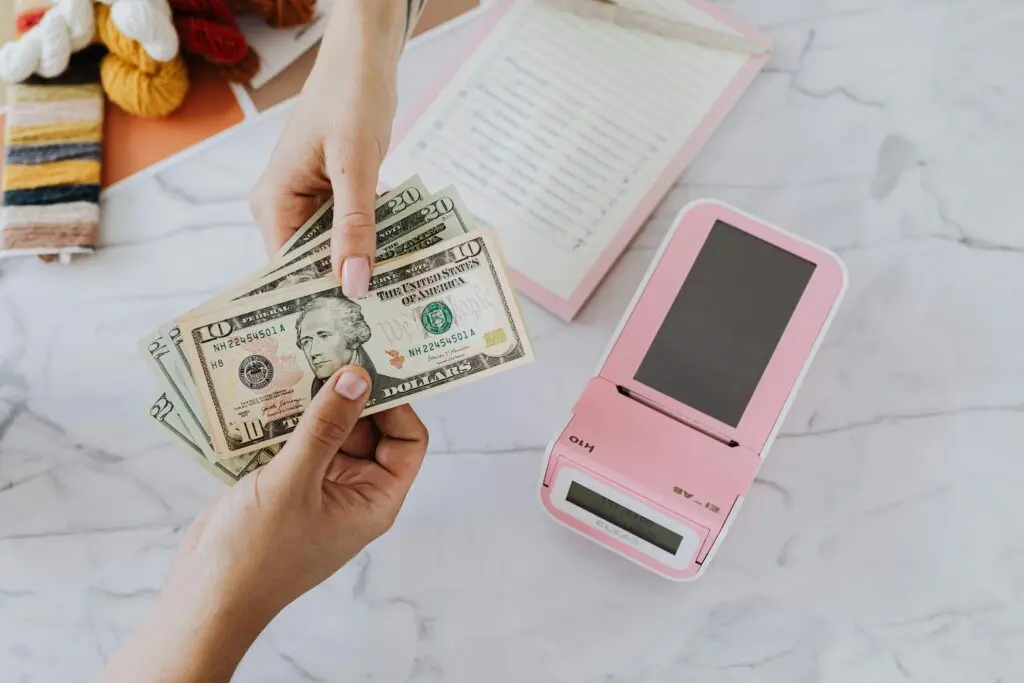
How to break free from living paycheck to paycheck.
Here’s the truth: living paycheck to paycheck is like running on a treadmill that’s stuck at full speed. You’re sweating, hustling, and giving it your all… yet you’re not moving forward.
I know the feeling. Years ago, I had a good job on paper but still lay awake at night, staring at my bank balance and wondering, “Where did it all go?” Every unexpected bill felt like a punch in the gut. That kind of stress isn’t just financial — it’s emotional, mental, even physical.
But here’s the good news: you don’t have to stay on that treadmill. With a few small but powerful steps, you can start creating margin in your money, peace in your mind, and freedom in your future.
Today, I want to show you 15 practical ways to stop living paycheck to paycheck. These aren’t gimmicks. They’re real, doable shifts that can help you build momentum — starting right now.
15 Practical Steps to Take Control of Your Money
1. Make a Real Budget (Not a Guess)
Think of a budget as your money’s GPS. It tells every dollar/rand where to go instead of leaving it to wander.
List all your income sources.
Write down your actual expenses (not just what you think you spend).
Spot the leaks — unused subscriptions, too many takeaways, or those sneaky impulse buys.
Clarity is power. When you know your numbers, you can start steering your money instead of being dragged by it.
2. Cut Back on the “Little Leaks”
You don’t have to live like a monk — but you also don’t need five streaming services.
Cut back on unused subscriptions.
Shop smarter (make shopping lists, look out for sales, and cash back apps and cards are your friends).
Delay impulse buys for 24 hours.
Small leaks sink big ships. Plug a few, and you’ll free up more than you think.
3. Build an Emergency Fund 🛟
An emergency fund isn’t just about money — it’s about creating some breathing room. Start small: $200, then $500. Over time, aim for 3–6 months’ of your monthly expenses in this fund. Keep it in a separate savings account and easy to access.
It’s not “extra savings.” It’s your safety net for when life throws you curveballs, and believe me it will.
4. Crush High-Interest Debt First
Debt is like carrying a backpack of bricks uphill. Pay off the heaviest (highest interest) ones first — which are usually credit cards. Even a few extra payments beyond the minimum make a big difference. Each dollar/rand you free from debt is a dollar you can invest in yourself.
5. Try Cash Instead of Credit
It feels different handing over cash than swiping a piece of plastic. Try the envelope method: one envelope for groceries, another for fuel, another for fun. When the envelope is empty, that category is done and no more spending. Simple but powerful.
6. Automate Your Savings
“Pay yourself first.” Set up an automatic transfer the day you get paid — even if it’s small. $200 a paycheck adds up over time. Automation creates discipline without the stress.
7. Put Needs Before Wants
This isn’t about denying yourself. It’s about priorities. Rent, food, lights, and transport come first. Netflix and sushi night? They can wait until the essentials are covered.
8. Set Clear Budgeting Goals
Goals turn boring budgets into missions. Want to buy a home? Save for a trip? Retire early? Write it down. Every time you skip a splurge, remind yourself: “I’m not saying no. I’m saying yes — to my bigger dream.” or maybe early retirement!
9. Ask for That Raise
If you’ve been putting in the work, don’t be shy to ask your boss for a raise. Keep a record of your wins and pick the right moment (preferably when your boss is in a good mood). And if the answer is “not now,” ask what you can improve to earn it next time.
10. Start a Side Hustle
Your skills are valuable. Social media management, tutoring, virtual assistance — even selling unused stuff online. Extra income builds your emergency buffer faster than cutting coffee ever will.
11. Cook More at Home
Restaurants = quick joy, long-term pain. Cooking at home saves money and also gives you more control of what you put in your body . Batch cook favourite dishes, freeze extras, and pack leftovers for lunch. Your bank account (and waistline) will thank you.
12. Use Cash Back Apps & Cards
Why not get rewarded for money you’d spend anyway? From grocery points to fuel discounts, these small wins add up. It’s like getting a tiny raise without asking your boss.
13. Find Free Fun
Money stress doesn’t mean you can’t have any joy. Parks, hikes, free events, game nights with friends are all clever ways to have fun cheaper— fun doesn’t have to come with a bill. Sometimes the best memories cost nothing.
14. Plan for Future Expenses
Christmas, car insurance, that big annual bill or vehicle maintenance— they come every year, yet somehow always feel like a surprise. Start a sinking fund: put away a bit each month, and you’ll avoid panic when the bill arrives as you would’ve planned for it.
15. Live Below Your Means
This is the secret sauce. Spend less than you earn, even when you earn more. No flashy lifestyle creep. It’s not about deprivation — it’s about creating space for freedom.
The Big Lesson
Breaking free from paycheck-to-paycheck living isn’t about one big leap. It’s about stacking small, intentional wins and taking small consistent steps. A trimmed expense here, a saved $200 there, an extra payment on that credit card — these are bricks. And over time, you’ll build a wall of security.
Remember this: “A small leak will sink a great ship, but a steady hand can steer it safely home.”
So, the paycheck treadmill can stop. The cycle can break. And freedom? It’s closer than you think if you keep at it.
Which of these 15 steps will you try first?
Save this guide for when you need a boost.
Or share it with a friend who’s also tired of running that paycheck treadmill.




